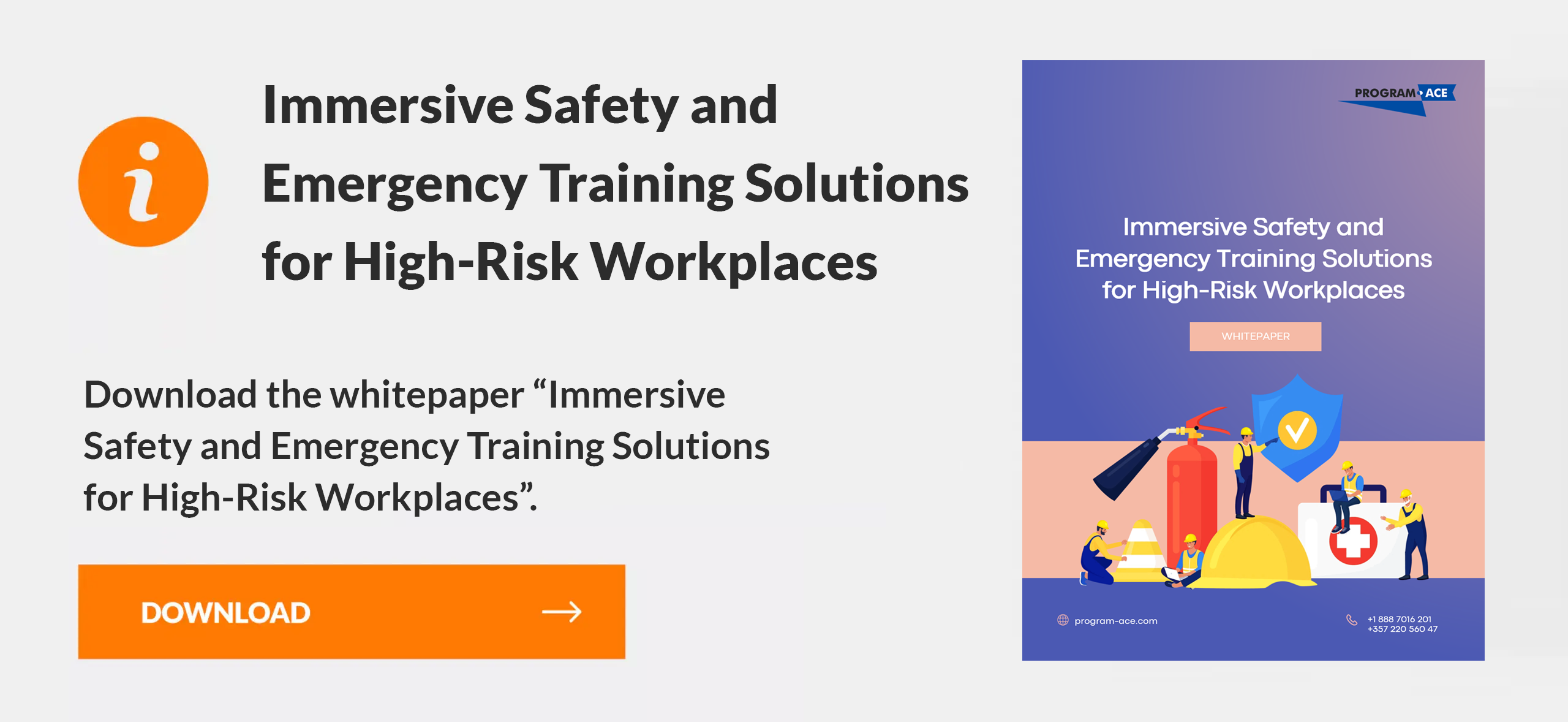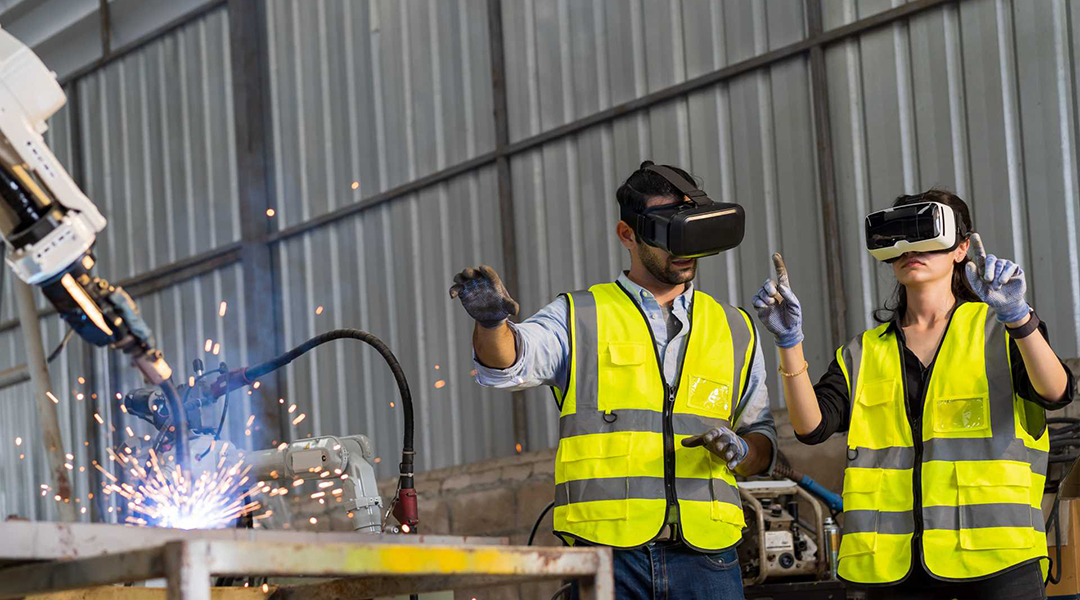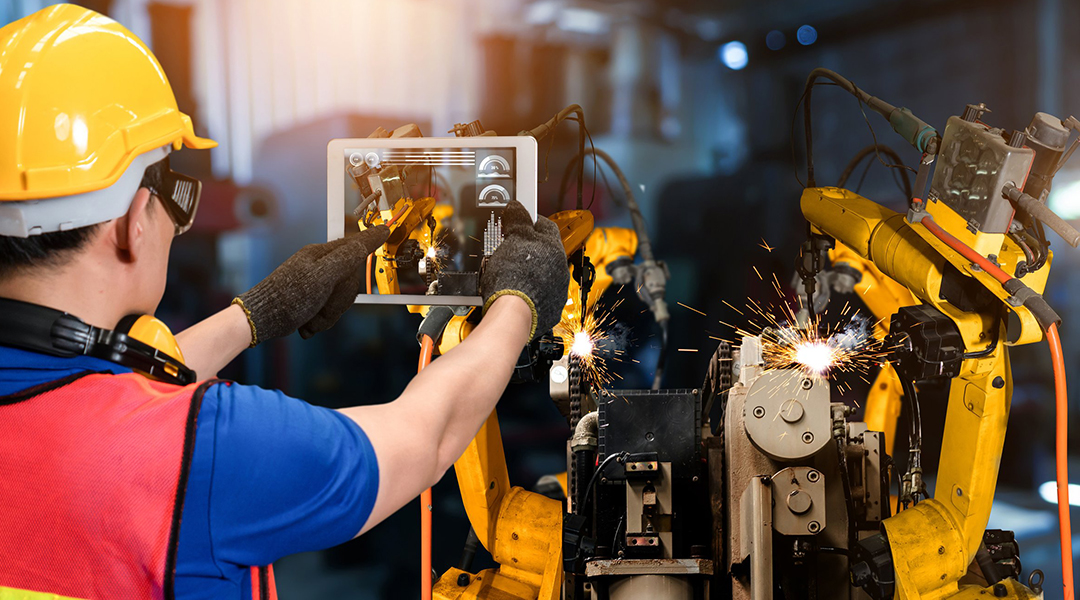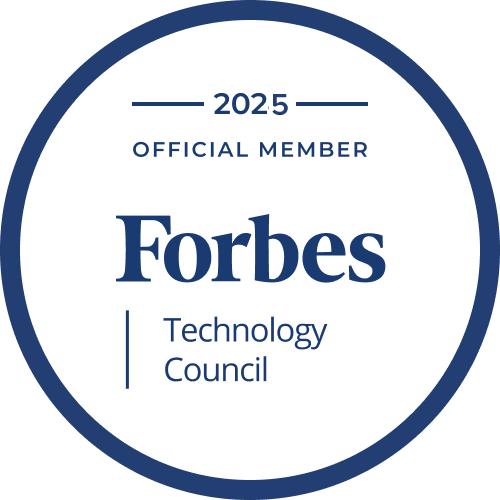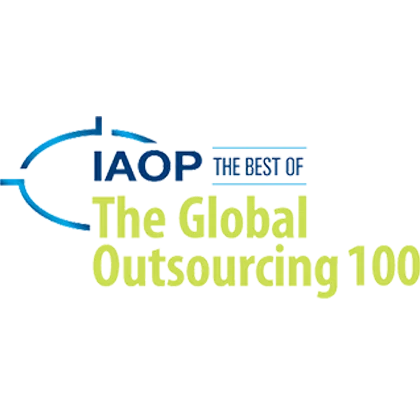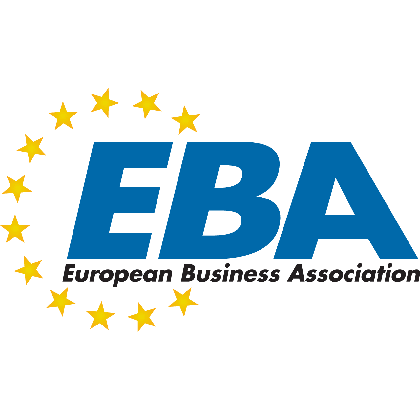Mining operations require precise planning, reliable equipment, and skilled workers to maintain productivity and safety. Traditional training methods often fail to prepare teams for high-risk situations or complex operational challenges. Digital tools, including simulation and virtual training, provide a controlled setting where employees can practice procedures, improve situational awareness, and refine responses without interrupting production.
Modern solutions emphasize measurable results and scalability, giving organizations the ability to train both new and experienced staff effectively. Hard skills training solutions are particularly valuable in mining, as every employee must demonstrate proficiency with specialized machinery, hazard recognition, and safety compliance. Virtual platforms support repeatable practice, data-driven evaluation, and scenario-based learning that mirrors on-site conditions.
Businesses that prioritize these strategies can build stronger teams and increase operational resilience. This article explains how immersive mining training supports safer, smarter, and more efficient operations.
Introduction to Immersive Mining Training in Modern Operations
Mining operations depend on precision, adherence to safety standards, and staff proficiency. Companies increasingly adopt immersive learning methods to meet these demands. Training in mining now involves digital simulations, VR environments, and advanced analytics to replicate on-site scenarios.
Operators practice handling hazards, troubleshooting machinery, and following compliance rules in realistic settings. These methods reduce risks and improve workforce confidence. Organizations benefit from scalable training modules that can be updated with regulatory or technological changes. A structured approach helps minimize downtime, protect expensive machinery, and enhance team coordination.
Why Training is the Backbone of Mining Safety and Efficiency
Effective training ensures mining teams are capable of working safely in hazardous environments and meeting production goals. Employees must understand every stage of operations, from geological assessment to heavy equipment operation. Structured programs give staff a foundation in procedures, safety measures, and technical skills.
Some benefits of robust mining industry training include:
- Reduced incidents. Comprehensive instruction lowers the risk of accidents and injuries.
- Higher productivity. Skilled workers complete tasks accurately and on schedule.
- Equipment longevity. Proper use and maintenance training reduces repair costs.
- Employee confidence. Well-trained teams handle unexpected challenges effectively.
Coal mining training, for example, addresses specific hazards, ventilation practices, and regulatory requirements. Detailed instruction in these areas ensures compliance and operational continuity. Training also improves collaboration between supervisors, machine operators, and engineers, strengthening overall workflow.
Industry Trends Driving Training Investments
Organizations in the mining sector increasingly allocate budgets to education programs that focus on digital transformation. Demand for immersive, data-driven instruction grows as operations become more complex and equipment more advanced. Companies recognize the value of aligning training with regulatory requirements and new safety standards.
Three trends shaping investment priorities include:
- Virtual environments. Digital simulations reduce the need for physical setups while offering realistic training scenarios.
- Data-based assessment. Performance analytics help identify skill gaps and customize learning paths for each role.
- Flexible access. Online modules and VR-based content support remote learning, minimizing disruption to active sites.
Mining management training also reflects a shift toward leadership development. Supervisors learn risk management, workflow planning, and team coordination strategies tailored to high-stakes environments. As global operations expand, multilingual programs and remote collaboration training are becoming standard.
Mining companies adopt scalable platforms to provide consistent instruction across multiple locations, reducing variability in safety practices. Modernized approaches make training measurable, cost-effective, and directly aligned with operational goals, driving industry-wide investment.
Evolving Safety Standards in the Mining Sector
Mining operations face constant updates to safety regulations as governments and industry bodies respond to workplace hazards. Companies now integrate hard skills training into their safety frameworks to ensure every worker can perform critical tasks correctly. Training solutions cover machine operation, hazard identification, and emergency protocols, all tailored to site-specific risks.
Organizations with well-trained staff experience fewer regulatory violations, lower insurance costs, and better audit outcomes. Updating educational programs regularly helps teams maintain compliance and adapt to evolving operational requirements quickly and effectively.
Global Safety Regulations and Their Business Impact
Mining companies operate under strict regulations that differ across regions, requiring standardized safety practices supported by ongoing education. Regulatory agencies impose rules on machinery maintenance, ventilation, explosives handling, and worker health monitoring. Organizations that fail to comply face significant fines, downtime, and reputational damage.
Training initiatives provide a proactive approach to meeting these obligations. Companies often integrate certification programs into onboarding processes, ensuring every employee understands local requirements before entering active sites. Annual refresher courses and targeted assessments allow management to confirm compliance across all teams.
International standards, such as ISO certifications and occupational health guidelines, add further layers of responsibility. Mining firms with global operations benefit from unified training systems that deliver consistent instruction regardless of location. A single framework simplifies auditing, streamlines reporting, and strengthens operational credibility.
Beyond legal obligations, regulatory alignment builds trust with stakeholders, including investors and local communities. Systematic adherence to safety rules also reduces disruptions caused by inspections or investigations. Companies that prioritize regulatory training set a benchmark for industry professionalism and operational resilience.
Incorporating Risk Assessment into Workforce Education
Mining companies increasingly treat risk assessment as a foundational part of employee training. Workers are trained to identify hazards, evaluate their potential consequences, and implement mitigation measures in real time. Programs cover hazard classification, emergency procedures, and safe operation of vehicles and machinery.
Risk-oriented instruction often involves:
- Scenario-based learning. Teams practice responding to realistic emergencies without physical danger.
- Job-specific evaluations. Tailored content ensures relevance to each role, from technicians to supervisors.
- Dynamic updates. Training content adjusts to reflect equipment changes, environmental shifts, or new safety data.
Mining emergency response training strengthens this approach by equipping workers with rapid decision-making skills in high-pressure situations. Simulations replicate fire, structural collapse, or chemical exposure events, preparing teams for immediate action.
Risk-focused programs also emphasize communication, teaching staff to report hazards quickly and follow escalation procedures. Organizations adopting this model see measurable improvements in incident reporting accuracy and faster hazard resolution. Integrated risk training reduces operational downtime and creates a culture of shared accountability. The result is a workforce capable of preventing issues before they escalate, supporting safer and more efficient mining operations.
Virtual Training in Mining Areas That Deliver Tangible ROI
Mining organizations increasingly invest in virtual education programs to reduce accidents, improve productivity, and extend equipment life. Platforms deliver measurable outcomes by integrating engineering safety training with real-world scenarios, helping teams practice procedures in controlled environments.
Instruction focuses on site-specific challenges, machinery operation, and emergency planning, leading to fewer costly disruptions. Digital simulations also minimize training expenses by reducing the need for physical setups and allowing workers to learn without interrupting production schedules. Companies implementing such systems gain better regulatory compliance, improved retention, and faster employee readiness.
Equipment Handling and Heavy Machinery Proficiency
Proficiency with machinery is critical for maintaining mining productivity and ensuring worker safety. Virtual simulations provide realistic environments where operators can practice without risk. Content covers setup, operation, troubleshooting, and maintenance for drills, loaders, and haul trucks.
Mining heavy equipment operator training programs often feature:
- Role-specific content. Lessons designed for equipment type and operator level.
- Real-time feedback. Digital tools record errors and recommend targeted practice.
- Maintenance procedures. Workers learn preventive care methods to reduce repair frequency.
- Performance tracking. Managers monitor progress through detailed reports and skill assessments.
Mining machinery training supports these goals by creating standardized knowledge across teams, ensuring every worker understands both operational and safety requirements. Consistent training reduces damage to costly machines and minimizes operational downtime.
Companies using virtual platforms can quickly update lessons to reflect equipment upgrades, new features, or regulatory changes, avoiding gaps in employee knowledge. Training content is available remotely, allowing new hires and experienced staff to train without leaving job sites. With this approach, operators gain competence faster, leading to measurable productivity gains and safer work environments.
Hazard Recognition and Emergency Protocols
Accurate hazard detection and a clear understanding of emergency responses are essential for mining teams. Virtual courses replicate high-risk situations, allowing employees to practice decisions that could save lives. Modules teach staff to identify environmental dangers, machinery malfunctions, and structural risks before they escalate.
Mining first aid training plays a key role, providing instruction on stabilizing injured personnel and using on-site medical kits effectively. Mining security training complements these lessons by covering evacuation strategies, site access management, and communication protocols during crises. Programs often include:
- Fire response. Correct use of extinguishers and safe evacuation routes.
- Gas exposure. Procedures for detection, ventilation, and employee protection.
- Collapse scenarios. Rapid assessment and action plans for tunnel or wall failures.
- Medical coordination. Steps for reporting incidents and involving emergency services.
Mining emergency response training strengthens confidence and teamwork under pressure. Employees rehearse responses to real-world events without physical risk, improving readiness and reducing incident response time. Organizations benefit from fewer disruptions, faster recovery during emergencies, and compliance with regulatory expectations.
Environmental Sustainability Practices in Mining
Sustainable practices in mining reduce ecological damage and strengthen the company's reputation. Training programs now incorporate environmental management into core curricula, ensuring employees understand regulations and best practices for minimizing environmental risks.
Mining geology training supports sustainability initiatives by giving staff insight into site-specific terrain, mineral deposits, and structural conditions. This knowledge improves planning, reduces unnecessary excavation, and protects surrounding ecosystems. Regular instruction ensures that environmental practices are not optional add-ons but integrated into every stage of operations.
Companies adopting sustainability-focused education programs demonstrate accountability to regulatory bodies and communities. Training empowers employees to identify risks early, implement environmentally sound solutions, and accurately document compliance efforts. With growing global attention on environmental performance, well-trained staff help organizations maintain licenses, attract investment, and achieve operational goals responsibly.
Leveraging Technology to Transform the Mining Industry Training
Technology-driven training solutions are reshaping how mining professionals gain expertise. Organizations adopt immersive tools, advanced analytics, and remote learning systems to address complex operational requirements. VR and AR solutions replicate hazardous conditions without risk, while AI-powered analytics personalize instruction for each employee.
Mining industry training now focuses on efficiency, accuracy, and regulatory compliance rather than generic content delivery. Companies achieve better outcomes by integrating advanced training platforms into safety, maintenance, and productivity strategies. The result is a workforce prepared for evolving challenges through structured, technology-supported learning.
VR and AR Solutions for High-Risk Scenarios
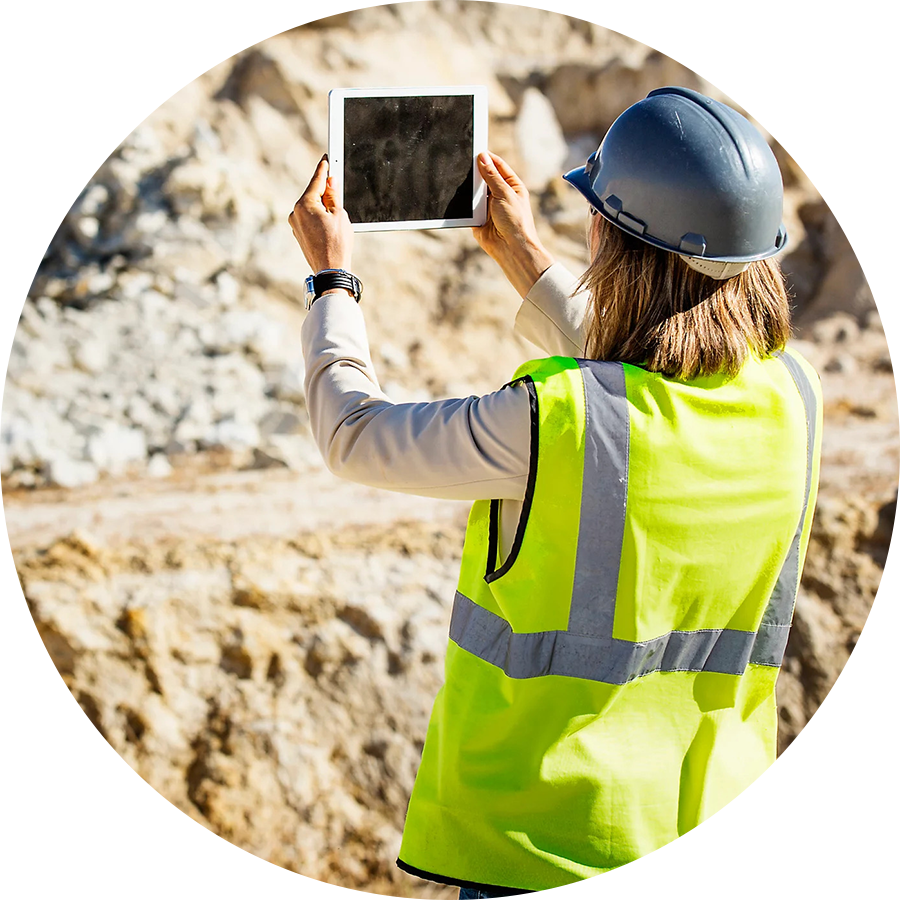
Virtual reality and augmented reality have become essential for preparing mining personnel to handle high-risk conditions. Employees can practice working with explosives, navigating confined spaces, or responding to gas leaks in realistic, risk-free environments.
Distinct approaches within VR and AR safety solutions include:
- Immersive hazard walkthroughs. Workers explore digital representations of actual sites, identifying hazards and practicing responses.
- Operator coaching environments. Trainers guide employees in real time, observing performance and offering corrections.
- Augmented reality overlays. Workers receive safety instructions and step-by-step visuals while handling real equipment.
- Remote expert support. Specialists join sessions virtually to assist teams during training exercises.
Companies implementing VR and AR training see fewer accidents and faster skill acquisition because employees develop confidence before entering live work areas. Complex drills, such as mine evacuation or fire suppression, become repeatable and cost-effective when performed digitally.
By eliminating the need for large-scale physical training setups, organizations save resources and provide consistent instruction across multiple locations. Mining equipment training also benefits from immersive tools, allowing operators to become proficient without risking damage to machinery.
Data-Driven Insights from Training Simulations

Mining companies increasingly rely on performance data to shape education programs. Simulation platforms generate detailed analytics on employee actions, decision-making, and accuracy, allowing trainers to refine content and prioritize critical skills.
Rather than traditional static evaluations, modern systems offer:
- Comprehensive skill dashboards. Managers review performance metrics, completion rates, and error frequency across teams.
- Historical comparisons. Data trends reveal long-term improvement or highlight recurring weaknesses.
- Predictive analysis. AI tools forecast training needs based on employee performance and project requirements.
Organizations use these insights to assign resources efficiently, update safety strategies, and identify employees ready for leadership roles. Mining management training benefits from data analysis by targeting competencies such as planning, incident reporting, and regulatory compliance. The ability to measure training effectiveness helps companies demonstrate ROI and strengthen stakeholder trust.
Tailored reporting also supports regulatory audits, making it easier to document compliance with health and safety standards. Training simulations that track behavior over time create a continuous improvement cycle, reducing errors and minimizing costly incidents. Companies that integrate data analytics into mining training strategies achieve measurable progress in operational safety, productivity, and workforce retention.
AI-Driven Personalization in Skill Development
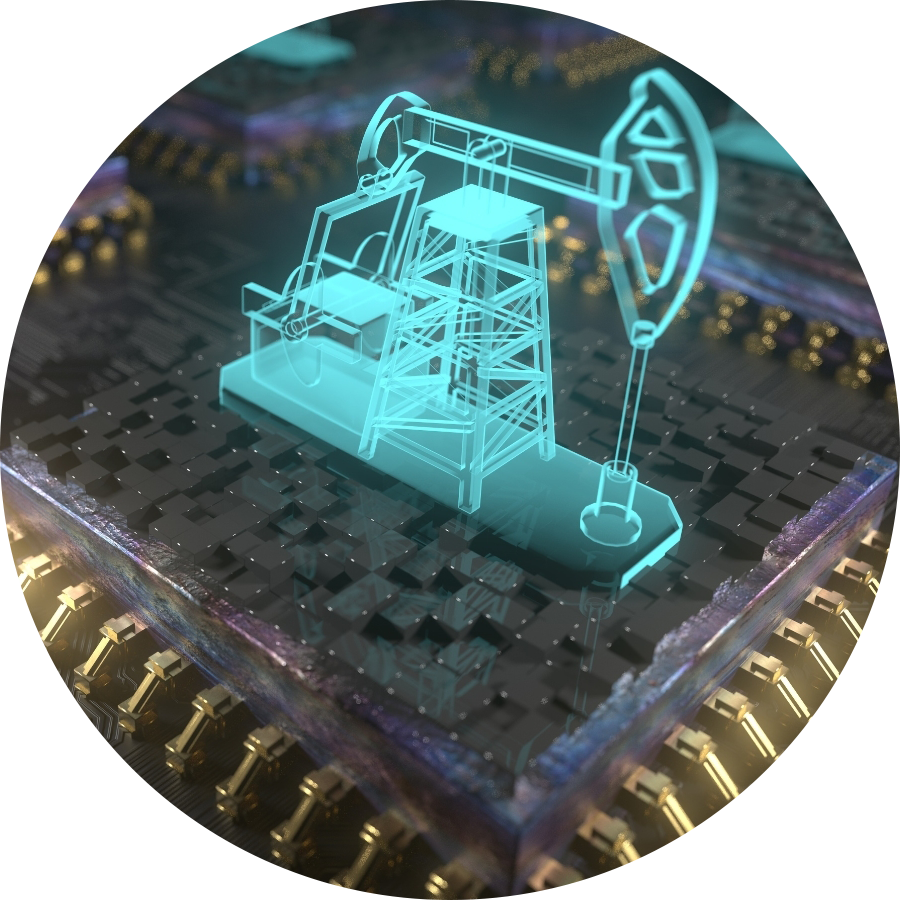
Artificial intelligence enhances mining education by delivering highly specific learning paths for each employee. AI-driven systems analyze previous assessments, job roles, and field experience to adapt instruction accordingly. Workers focus on skills most relevant to their daily responsibilities, reducing time spent on unnecessary training.
Personalized education strategies often involve:
- Adaptive testing. Training solutions adjust content difficulty based on employee performance.
- Role-matched learning. AI recommends resources that align with job responsibilities.
- Automated progress tracking. Systems measure development milestones and recommend next steps.
Mining leadership training programs benefit from this approach by identifying future supervisors and preparing them with targeted instruction. AI-based personalization improves retention because staff engage with material that reflects actual work scenarios. Organizations gain visibility into workforce strengths and gaps, enabling strategic planning for promotions, certifications, or cross-training opportunities.
Personalized solutions also simplify global operations by delivering content in multiple languages and adjusting for cultural differences. With AI integration, training becomes a dynamic process that evolves with project requirements, helping mining companies maintain high safety and performance standards while reducing unnecessary training costs.
Designing Training Programs for a Multigenerational Workforce
Mining companies often employ workers from different generations, each with unique expectations, learning preferences, and experience levels. Training solutions must bridge these differences to maintain safety and productivity. A well-structured approach combines hands-on practice, digital tools, and mentoring systems to meet diverse needs.
Younger employees often respond well to technology-driven learning, while experienced staff value practical demonstrations and real-world examples. Mining training programs that integrate both approaches ensure consistent skill development, improve knowledge transfer, and create a cohesive team environment regardless of age or background.
Addressing Skill Gaps Across Roles and Experience Levels
Workforces in mining operations include a wide range of roles, from technicians and operators to supervisors and engineers. Each group requires specific training strategies to close skill gaps and standardize performance.
Skill development often focuses on:
- Role differentiation. Training content is designed around operational duties, ensuring relevance and reducing training time.
- Technical specialization. Employees learn advanced methods for machine operation, geological surveying, or maintenance.
- Leadership preparation. Experienced staff receive additional education to support supervisory responsibilities.
Mining geology training supports informed decision-making by equipping teams with a strong understanding of terrain, mineral composition, and site stability. Training also identifies gaps in equipment knowledge, safety practices, and regulatory compliance, which are addressed through personalized learning paths.
Mining management training complements technical instruction, preparing supervisors to handle project planning, resource allocation, and performance evaluations. By assessing each employee's skill set through data-driven evaluations, organizations ensure every worker is matched to tasks that align with their capabilities. A structured approach builds confidence, minimizes accidents, and raises overall operational quality.
Building Engagement Through Interactive Learning Methods
Training engagement directly influences employee retention and knowledge transfer in the mining sector. Companies increasingly implement interactive formats to make training practical and measurable.
Key strategies for engagement include:
- Scenario simulations. Employees experience realistic events without safety risks, improving problem-solving skills.
- Gamification features. Progress tracking, scoreboards, and rewards encourage participation.
- Peer-to-peer collaboration. Teams share expertise, helping newer employees learn faster.
- Blended delivery. Training combines in-person workshops with digital content for greater flexibility.
Mining security training programs particularly benefit from interactive instruction, as they require employees to respond to high-pressure situations confidently. Realistic drills teach staff how to secure access points, respond to unauthorized entries, and coordinate with emergency services. Interactive training also supports mining leadership training by creating opportunities for supervisors to practice decision-making in complex operational scenarios.
Organizations using advanced engagement methods reduce knowledge gaps and achieve higher completion rates. Training becomes more than compliance-focused, evolving into a tool for skill development, workforce motivation, and operational excellence. Tailored interactivity ensures every employee, regardless of role or seniority, gains actionable knowledge that supports daily work.
Contact us for high-quality immersive mining training solutions.
Compliance, Certification, and Continuous Improvement
Mining companies must ensure that every employee meets strict regulatory standards, maintains certifications, and refreshes critical skills regularly. Immersive mining safety training helps organizations achieve these objectives by simulating hazardous scenarios, enabling practical experience without physical risk.
Training programs also simplify audits and certifications by documenting employee competencies in detail. Continuous improvement strategies keep training content relevant, reflecting new equipment, processes, and regulations. A structured system for compliance builds stakeholder trust, reduces incidents, and reinforces a company's reputation for operational excellence.
Meeting ISO and Industry-Specific Training Requirements
International standards such as ISO 45001, along with regional mining regulations, require companies to implement structured education programs. Compliance training ensures workers understand safe operating procedures, environmental regulations, and site-specific hazards.
Essential strategies for meeting these requirements include:
- Standardized training frameworks. Unified structures ensure consistent education across all sites.
- Detailed documentation. Training records simplify audits and demonstrate regulatory adherence.
- Regular certification cycles. Employees renew their qualifications through mandatory testing and refresher sessions.
- Third-party verification. External assessments validate compliance with ISO and local regulations.
Mining first aid training is often a regulatory requirement, with strict guidelines on equipment availability and emergency procedures. Similarly, specialized mining management training ensures supervisors maintain certifications in leadership, planning, and risk assessment. Certification programs also integrate environmental practices, helping companies align operations with sustainability goals.
Investing in compliance-focused education reduces insurance premiums, limits legal exposure, and enhances operational stability. Companies that adopt internationally recognized standards demonstrate accountability, improving relationships with partners, communities, and investors. Consistently applied training solutions ensure mining teams remain qualified and ready to meet evolving safety and environmental expectations.
Metrics to Measure Training Effectiveness and ROI
Mining organizations increasingly rely on measurable performance data to evaluate education outcomes. Metrics provide insight into training quality, employee readiness, and overall return on investment.
Common measurement practices include:
- Pre- and post-assessments. Comparing test results shows skill improvement over time.
- Behavioral tracking. Observations and simulations measure how well employees apply knowledge in real situations.
- Incident rate analysis. Lower accident numbers indicate successful training impact.
- Equipment performance reports. Reduced machine damage highlights operator competency.
Mining emergency response training outcomes are particularly important, with performance metrics focusing on evacuation times, hazard recognition accuracy, and decision-making speed. Data from these evaluations helps companies identify underperforming areas and adjust content accordingly.
Mining leadership training metrics measure improvements in team coordination, communication, and decision quality. By tying outcomes to operational performance, companies justify training budgets and refine educational strategies. Long-term reporting also supports certifications and compliance audits by demonstrating ongoing workforce development. Effective evaluation systems transform training from a procedural requirement into a performance driver, ensuring every investment in education contributes to safety, efficiency, and profitability.
Mining Training Delivery Models and Cost Structures
Mining companies choose training delivery strategies based on workforce size, budget, and operational complexity. Options range from on-site instruction to fully remote learning, each with unique benefits and limitations. Cost structures vary depending on customization, regulatory requirements, and the use of technology.
Mining training solutions often incorporate a blend of delivery methods to strike a balance between flexibility, safety, and efficiency. Investment in tailored education models minimizes disruptions and ensures a consistent skill standard across teams. Selecting the right approach enables companies to control expenses while meeting industry regulations and enhancing workforce performance.
On-Site vs. Remote Training: Pros, Cons, and Best Use Cases
| Factor | On-Site Training | Remote Training |
| Learning environment | Delivered in real mining settings with access to machinery and safety equipment. | Conducted through VR, AR, or digital platforms with no need for physical presence. |
| Advantages | Realistic experience; hands-on practice; better suited for heavy equipment tasks. | Flexible scheduling; cost savings on travel; scalable for global teams. |
| Limitations | High logistics costs; production downtime during sessions. | Less physical interaction; requires reliable internet and hardware. |
| Training focus | Best for mining equipment training, safety drills, and geological field instruction. | Effective for theory-based lessons, leadership education, and compliance reviews. |
| Cost impact | Higher upfront expenses due to travel, instructors, and operational pauses. | Lower overall costs; reusable content reduces long-term spending. |
| Best use cases | Hazard response exercises, machine operation practice, and advanced technical skills. | Policy training, refresher courses, and multinational workforce onboarding. |
Outsourcing vs. In-House Training Programs
| Factor | Outsourced Training | In-House Training |
| Expertise | Access to external specialists with mining-specific certifications and experience. | Relies on internal teams; expertise may be limited to company-specific processes. |
| Customization | Tailored solutions aligned with international standards and industry trends. | Custom content reflects company workflows but may lack external insights. |
| Scalability | Easily expandable for large teams or multiple locations. | Harder to scale quickly; resource limitations can slow delivery. |
| Technology integration | Providers often supply VR, AR, and AI-driven training tools. | Requires additional investment to implement advanced systems. |
| Cost structure | Higher per-course cost but lower long-term development expenses. | Lower immediate cost but higher maintenance and upgrade spending. |
| Best fit | Companies needing mining leadership training, emergency response expertise, or audits. | Firms with stable operations seeking consistent internal standards and retention. |
The Best Mining Training Programs That Changed Operations
1. Confined Space VR Training
Technical Specification
Confined Space Entry VR Training immerses users in a simulated environment, allowing them to practice essential pre-entry steps for permit-required confined spaces, including identifying warning signs, performing atmospheric testing, and working collaboratively for safer operations.
About the Course
Participants learn to:
- Recognize critical warning signs for safe entry
- Conduct atmospheric testing and assess hazards
- Coordinate with team members to ensure safety
- Use equipment like ventilation systems and valve locking (LOTO) devices
Standards Compliance
Aligns with: NEBOSH, ISO 45001, and OMS by IOGP.
The VR Experience
Takes place inside a virtual oil storage tank environment. Users simulate work permits, sign placement, gas testing, LOTO, ventilation setup, role assignments (observer and belayer), harness use, communication checks, and final permit signing.
Features
- Languages: Multiple (including English, Arabic, Spanish, Ukrainian, etc.)
- Duration: 30 minutes of practice
- Platform: VR (stand‑alone, 3D)
- Headset compatibility: HTC Vive Focus 3, Vive Pro, Vive XR Elite; Lenovo VRX; Meta Quest 2/3/Pro; Pico Neo 3/4/Pro.
2. University of Utah + Minverso: Metaverse-Based Mine Safety VR Platform
A collaboration between the University of Utah's Center for Mine Safety and Health and VR firm Minverso produced a pioneering metaverse training solution for the mining industry. This immersive platform enables trainees to practice real-life situations, such as fire control, mine evacuation, and equipment operation, in highly realistic VR environments.
Distinctive aspects
- Real-time guidance, scenario customization, and performance tracking;
- Combines academic rigor with advanced technology;
- Cuts traditional training costs and enhances safety preparedness;
- Planned expansion to include AR and remote operation features.
3. WVU's Augmented Reality Headset Training for Powered Haulage Safety
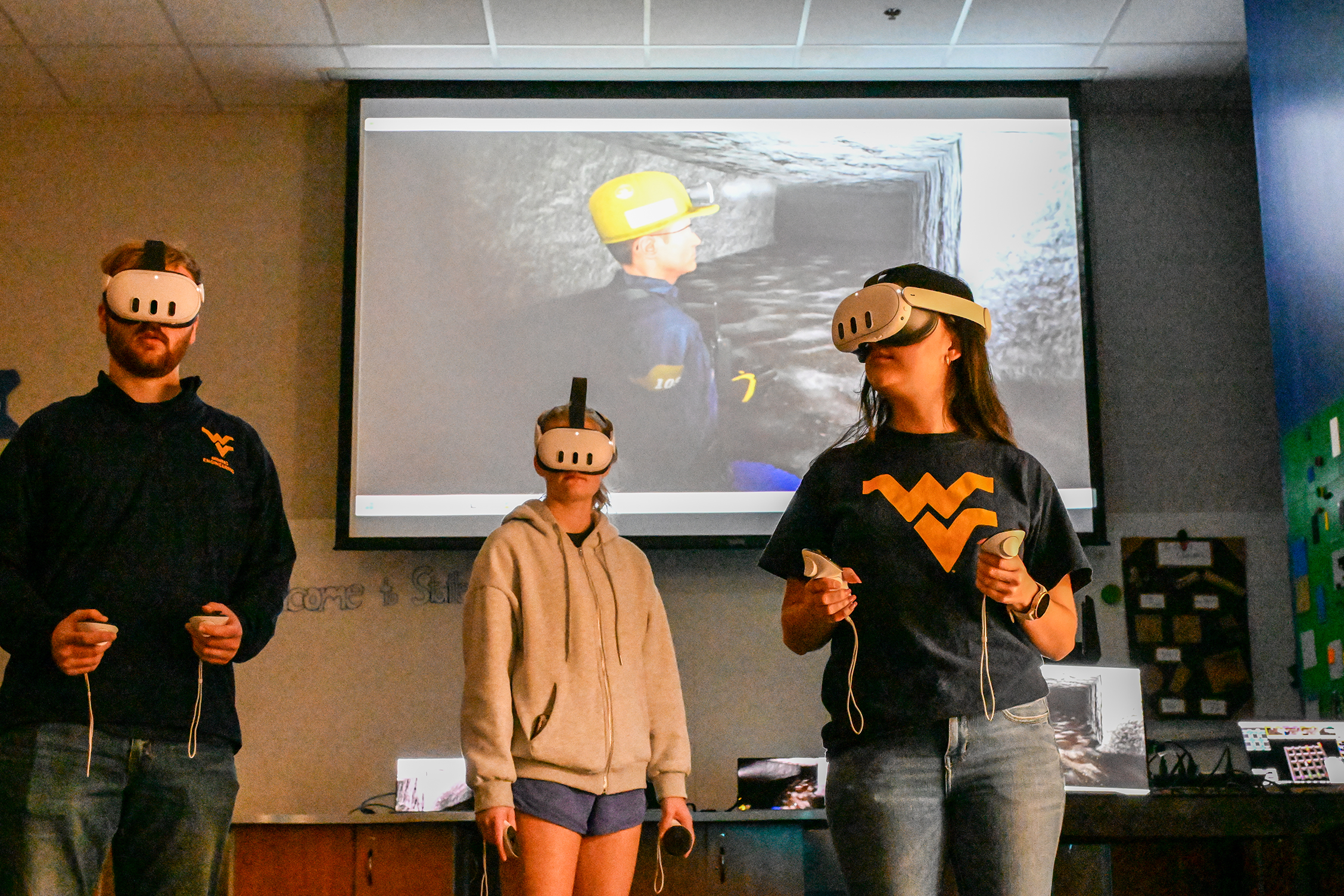
A West Virginia University researcher developed an AR-based training solution utilizing headsets to visualize blind spots around haul trucks and front-end loaders, which is the primary cause of fatal mining accidents due to limited visibility.
Essential benefits
- Trainees see projected blind spots in real-time, improving situational awareness;
- Practice hazard recognition and response in a safe, controlled setting;
- Funded by the U.S. Department of Labor's Brookwood-Sago Mine Safety Grants Program;
- Technology designed to reduce fatalities and injuries by enhancing safety around heavy mobile machinery.
Summary Table
| Program | Core Focus | Training Technology | Key Impact |
| Confined Space VR Training | Permit-required entry safety | VR (3D scenario-based) | Hands-on confined-space procedure skill building |
| University of Utah + Minverso | Mine safety and risk response | Metaverse VR platform | Customizable scenarios, tracking, scalable learning |
| WVU AR Headset Training | Powered haulage visibility | AR headsets | Hazard detection, reduced operator blind-spot risk |
Preparing for the Future of Mining Training
Mining operations are becoming more complex, with advanced machinery, automation systems, and stricter regulations shaping daily workflows. Training approaches must evolve alongside these changes to ensure employee readiness and operational safety. Companies are adopting immersive training solutions to prepare workers for highly technical roles while reducing the risk of costly errors.
Programs focused on robotics, automation, and sustainability give teams the skills required for next-generation mining projects. Future-ready education strategies also prioritize adaptability, ensuring staff can respond effectively to industry innovations and maintain operational efficiency.
Automation, Robotics, and Emerging Technologies in Training
Automation and robotics are central to modern mining operations, requiring highly skilled technicians and operators. Training programs now incorporate digital simulations and VR systems that replicate autonomous haulage systems, drilling robots, and remote-operated machinery. Employees practice both routine and emergency tasks in controlled settings before operating real machines.
Future-focused programs emphasize:
- Technical specialization. Workers learn to program, monitor, and troubleshoot robotic systems.
- System integration. Employees understand how automation interacts with ventilation, blasting, and logistics processes.
- Remote operation. Training includes managing machinery from control centers and improving safety in hazardous areas.
- Cross-disciplinary education. Participants receive exposure to IT, engineering, and mechanical systems to ensure well-rounded expertise.
Mining companies investing in emerging technology education reduce downtime and increase production efficiency while safeguarding staff. Organizations that prioritize early adoption of robotics training also build resilience, as teams remain equipped to manage both legacy and cutting-edge equipment.
Educational content updates frequently to reflect rapid innovation, allowing employees to stay competitive. As automation expands, a workforce trained in these systems becomes a strategic asset that strengthens safety compliance and operational quality.
Continuous Learning Culture as a Strategic Advantage
Mining operations demand consistent skill development to keep pace with regulatory updates, equipment advancements, and safety protocols. A continuous learning culture integrates education into daily routines, making training a regular component of the work environment rather than an occasional event. Companies offering structured access to updated material see higher employee engagement and retention.
Here are some strategies for building a strong learning culture:
- Microlearning sessions. Short, frequent lessons improve retention and limit production disruptions.
- On-demand resources. Digital libraries and VR environments allow staff to refresh their knowledge at any time.
- Career development pathways. Employees follow structured plans for promotions, certifications, and specialization.
- Feedback-driven updates. Training evolves based on employee performance data and incident reports.
Immersive training solutions encourage active participation, ensuring employees practice essential skills repeatedly. Continuous learning also strengthens leadership pipelines by preparing staff for supervisory roles early. Companies that invest in consistent workforce education create adaptable teams ready for rapid technological and operational changes.
Safer and Smarter Mining Training with Program-Ace's Expertise
Program-Ace delivers mining training solutions designed to reduce risk, optimize workforce performance, and meet strict industry regulations. As an innovative solutions integrator, the company combines VR, AR, AI, and advanced analytics to create measurable training outcomes for mining operations worldwide.
Each program is tailored to specific roles, equipment, and safety requirements, ensuring relevance and effectiveness. From immersive safety simulations to advanced management education, Program-Ace provides scalable solutions for companies seeking higher productivity and compliance. Contact us to discuss training strategies that align with your operational needs.

